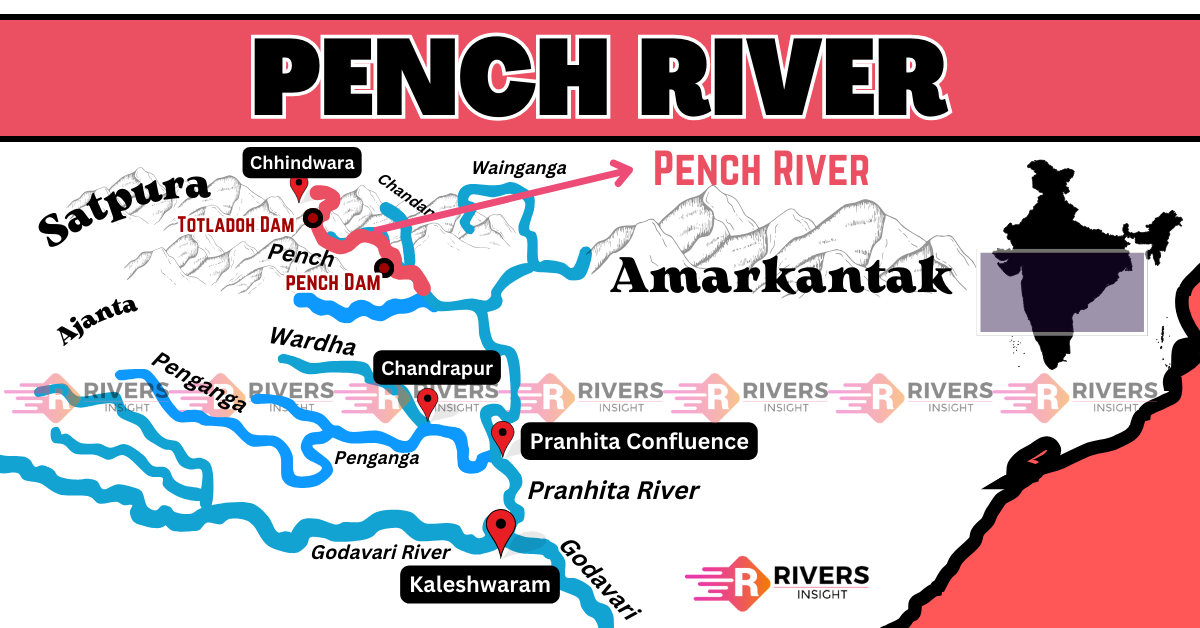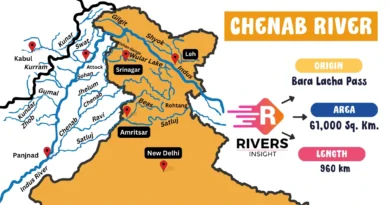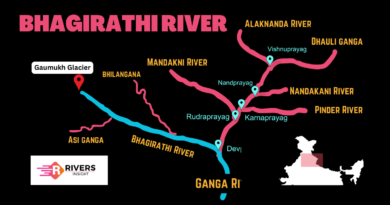Pench River: Map and Origin
Pench River is one of the most important rivers flowing through Madhya Pradesh and Maharashtra and has a total length of 192km. It originates in the Satpura range and eventually joins the Kanhan River, which later merges with the Wainganga River. Moreover, the river is best known for Pench Tiger Reserve, which inspired Rudyard Kipling’s famous novel, The Jungle Book.
Table of Contents
Origin and Course of Pench River
Pench River originates in the Satpura range, near the village of Junnardeo in Chhindwara district, Madhya Pradesh, at an elevation of about 1,050 meters above sea level. Flowing from north to south, it passes through Parasia, Singora, Singori, Chaurai, and Chand before reaching Pench National Park.
In Pench National Park, the river divides the reserve into two parts:
- Eastern forest range – Gumtara range
- Western forest range – Karmajhiri range
As it continues its journey, the river forms a natural boundary between Chhindwara and Seoni districts before entering Maharashtra. Eventually, it merges with the Kanhan River in Nagpur district, which later joins the Wainganga River, a major tributary of the Godavari River.
Tributaries of the Pench River
Two major tributaries are:
- Chandan River
- Kulbehra River
Dams and Water Projects on the Pench River
The Pench River is home to several dams and water projects:
- Totladoh Dam (Maharashtra): This hydroelectric dam, located within Pench National Park, was the first interstate project of Maharashtra. It is a key source of drinking water and power generation.
- Kamthikhairy Dam: Situated just downstream of Totladoh Dam near Navegaon Khairy in Parseoni Taluka, this dam supports irrigation and drinking water supply, contributing to Nagpur’s water needs.
- Pench Dam (Madhya Pradesh): Located in Seoni district, this dam is part of the Pench Irrigation Project and helps in irrigation and water storage.
Pench Canal System
The Pench River also supports an extensive canal system, which is vital for agriculture, power generation, and industrial use:
- Pench Right Canal: Supplies water to Nagpur, Koradi Thermal Power Station, and Khaparkheda Thermal Power Station. It also irrigates Parseoni, Kalmeshwar, Saoner, and Kamthi talukas, along with rural areas of Nagpur district.
- Pench Left Canal: Provides irrigation to Parseoni, Ramtek, and Mauda talukas and supplies water to NTPC Mauda Super Thermal Power Station and other industries.
More than 70% of Nagpur’s drinking water is supplied from these dams and canals, making the Pench River Basin an essential water resource for Maharashtra.
Wildlife of Pench
Pench River is best known for its connection to Pench Tiger Reserve, which spans both Madhya Pradesh and Maharashtra. This protected area is home to a rich variety of wildlife, including:
- Bengal Tigers
- Leopards
- Indian Gaur (Bison)
- Spotted Deer
- Sloth Bears
- Various bird species
So, this is all about the Pench River. I hope you found this article informative and well-structured. Let me know if you have any suggestions or if there’s anything you’d like to add!



